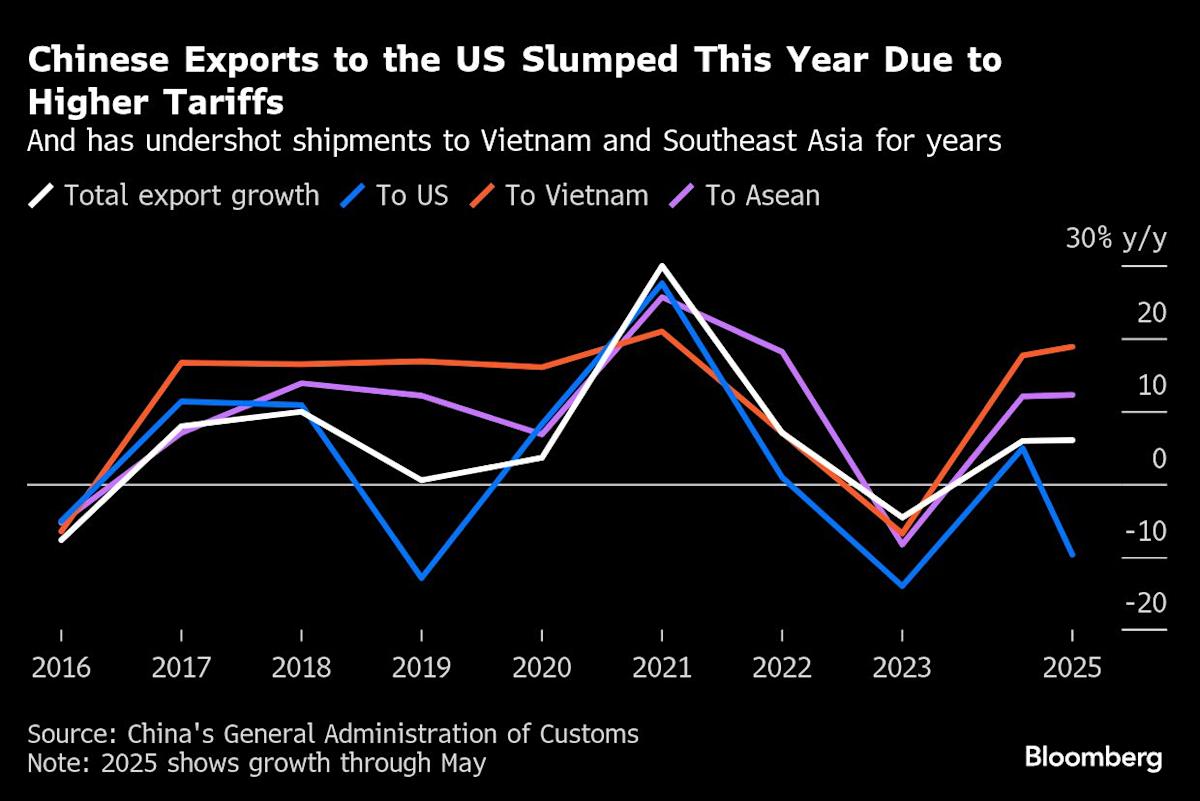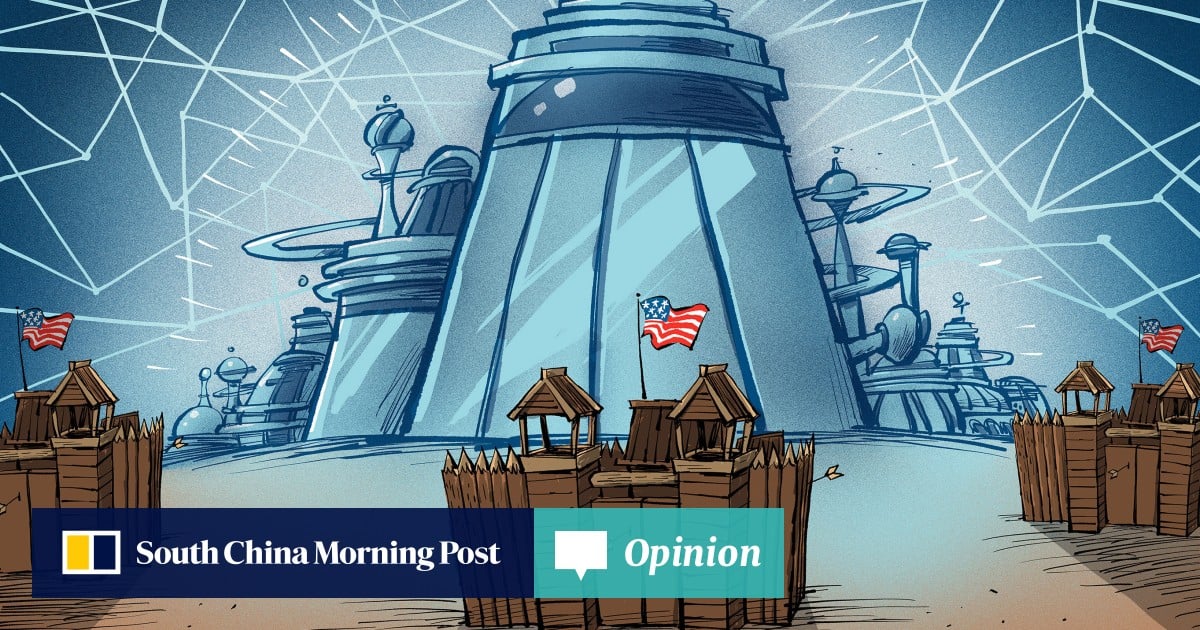(Bloomberg) — President Donald Trump’s new trade deal with Vietnam sends a clear signal about where US tariffs on Chinese goods might ultimately land, as talks between Washington and Beijing continue following their recent truce.
Most Read from Bloomberg
Chinese goods currently face tariffs of around 55%, a level expected to remain through August. But under the latest Vietnam agreement, the US will slap a 20% tariff on Vietnamese exports to the US and a steeper 40% levy on goods deemed to be transshipped — the latter targeting a well-worn backdoor used by Chinese exporters since the first China-US trade war to dodge American tariffs.
By closing the loopholes, the Trump administration is signaling what any future deal with China might look like. The 40% tariff on transshipped goods suggests that even if tariffs on China are eventually reduced, they’re unlikely to fall below that threshold.
“The 40% figure in the Vietnam deal might reflect a broader conviction in the Trump administration about the appropriate tariff level on China, which would be similarly reflected in other bilateral deals,” said Gabriel Wildau, a managing director at Teneo focused on political risk analysis in China. “However, I am skeptical that Trump has a specific red line for minimum tariffs on China.”
Beijing and Washington reached a trade framework last month following talks in London, which remains in effect through mid-August. As part of the deal, China agreed to resume shipments of rare earths — key inputs for wind turbines, electric vehicles and military hardware. In return, the US offered to ease some export restrictions on ethane, chip-design software and jet engine components.
US tariffs on Chinese goods have been cut back to around 55%, down from as high as 145% in early April. But 20% tariffs tied to fentanyl remain in place. Beijing has since tightened controls on two precursor chemicals used to make the drug — one of the few obvious avenues it has to win further tariff relief.
“The 20% is really the focal point where all the attention is centered right now,” said Christopher Beddor, deputy China research director at Gavekal Research. “The thinking is that the Chinese government is very willing to do a deal on something related to fentanyl. They’ve been telegraphing that months.”
Still, those efforts are unlikely to bring Chinese tariffs below the 40% rate now applied to Vietnam. If China’s duties were to fall to 35%, for instance, it would restore a competitive edge to China and encourage firms to shift operations back, running counter to the Trump administration’s broader objectives.
For now, here are signs both sides are following through on the terms of the London agreement and displaying signs of goodwill. The Trump administration has lifted recent export license requirements for chip design software sales in China, and approved US ethane exports to China without additional approvals.
Treasury Secretary Scott Bessent said Chinese rare earth magnets are flowing, although they haven’t yet bounced back to the levels seen before Chinese imposed export curbs in early April. The US remains hopeful that China will further ease restrictions on those exports after their London deal, he said in an interview Tuesday on Fox News.
Meanwhile, a senior Chinese official on Thursday delivered one of Beijing’s most positive messages about his nation’s ties with the US in weeks. Liu Jianchao, head of the Communist Party’s International Department, said at the World Peace Forum that he was “optimistic” about future relations.
“China is keenly aware of what it’s gained from China-US cooperation,” Liu said “Our cooperation is mutually beneficial. The act of putting up barriers will hurt the other and ourselves as well.”
Other Negotiations
Apart from Vietnam, Beijing is growing increasingly cautious about US efforts to strike trade deals that could isolate China. With a July 9 deadline approaching, when Trump’s higher “reciprocal” tariffs are set to take effect, American officials are ramping up negotiations with key partners in Asia and Europe.
Washington is pushing for new deals that would include limits on how much Chinese components in goods can be used in exports for the US, or commitments to counter what the US views as unfair Chinese trade practices. India, another nation racing to complete a deal, has been negotiating over “rules of origin.”
What Bloomberg Economics says…
“The looming question now is how China will respond. Beijing has made clear that it would respond to deals that came at the expense of Chinese interests and the decision to agree to a higher tariff on goods deemed to be “transshipped” through Vietnam may fall in that category. Given China’s position as Vietnam’s largest trading partner and key source of inputs for domestic production, any retaliatory steps could have an outsized impact on Vietnam’s economy.”
— Rana Sajedi and Adam Farrar. Click here to read the full report.
Beijing on Thursday said it’s taken note of the US-Vietnam trade deal and is currently assessing the situation.
“We’re happy to see all parties to resolve trade conflicts with the US through equal negotiations, but firmly oppose any party striking a deal at the expense of China’s interests,” He Yongqian, a spokesperson for the Ministry of Commerce, said at a briefing.
“If such a situation arises, China will firmly strike back to protect its own legitimate rights and interests,” she added, repeating a familiar warning.
–With assistance from Jacob Gu.
Most Read from Bloomberg Businessweek
©2025 Bloomberg L.P.


